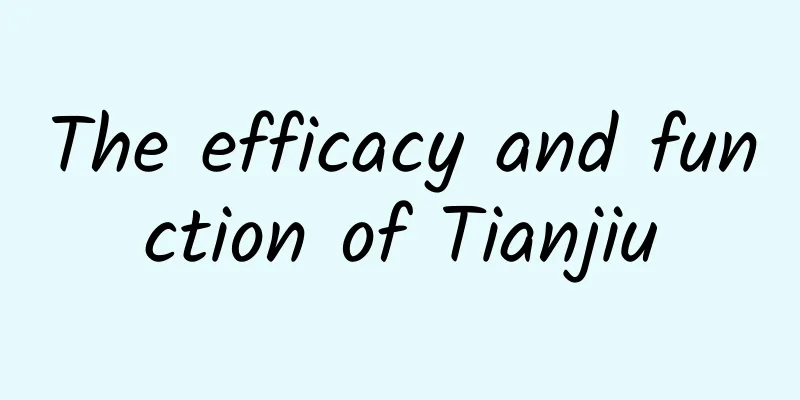The difference between Panax notoginseng and Panax notoginseng

|
What are the differences between Panax notoginseng and Panax notoginseng? What is the difference between the two? Many people in the industry do not understand the relationship between Panax notoginseng and Panax notoginseng, two plants of the Araliaceae family. Actually! Strictly speaking, Guangxi Tianqi and Wenshan Panax notoginseng are two names of the same medicinal herb. Perhaps Tianqi is more well-known to everyone, but Sanqi is the "name" of the Araliaceae plant Panax notoginseng, and "Tianqi" is more like its nickname. The name varies according to different regions. People in Wenshan area mostly call it Wenshan Panax notoginseng, while people in other areas call it Panax notoginseng. The relationship between the two is equal. If there is a difference, it may be in the region. The main production area of Panax notoginseng is "Wenshan area of Yunnan", and Tianqi was originally produced in "Tianyang, Jingxi County, Tiandong, Debao, Yulin City, Guangxi". In some parts of China, rattan Panax notoginseng is also called "Tianqi". You must pay attention to the difference! 1. The origin of the names of Panax notoginseng and Panax notoginseng Behind the name of every precious Chinese herbal medicine, there is an eternal legend. At the same time, folk customs also like to impart myths and legends. The purpose is to facilitate recording and spread to future generations. Panax notoginseng and Panax notoginseng are no exception! According to historical records: It is said that in ancient times there was a young man named Zhang Xiaoer who suffered from a strange disease called "urination disease". A traveling doctor named Tian came by and took out a kind of herbal powder for them to take. It worked immediately and many people praised it highly. When the doctor left, he left some medicinal herb seeds for many people to plant. Not long after, the county magistrate's daughter also got the same terminal illness. Zhang Xiaoer volunteered to get the herbs and go for treatment, but unexpectedly, the county magistrate's daughter died as a result. The county magistrate was furious and ordered the officers to lock up Zhang Xiaoer and torture him to extract a confession. Finally, Zhang Xiaoer could not bear the pain and brought in Doctor Tian and others. Soon, Doctor Tian was also arrested and the county magistrate wanted to charge him with "murder". Doctor Tian explained: This herb must be grown for three to seven years before it can be used as medicine. After saying this, he cut a knife on the base of his thigh, and blood suddenly gushed out like a fountain. Then he took out medicine powder and took it orally for external use. The bleeding stopped and the scar formed immediately, which amazed many people. In order to remember this bloody lesson, people called this herb "Sanqi", which means it must be transformed for three to seven years before it can be used as medicine. Later, because the doctor's surname was Tian, he was also called "Tian Qi". This story vividly illustrates the efficacy and function of Panax notoginseng, as well as the origin of its name. But in fact, according to historical research, Panax notoginseng, often referred to as Tianqi, is related to a place name. Tian refers to Tianzhou in Guangxi Province. Tianzhou is the origin of Panax notoginseng and also its concentration area, so it is called "Tianqi". The name "Sanqi" originated from the "Medical Secrets": "Seven leaves and three branches, hence the name". Later, "Guangxi General Records" during the Yongzheng period of the Qing Dynasty also recorded: "Sanqi has seven leaves and three roots in its stem, hence the name". "Compendium of Materia Medica Supplement" quoted "Travel Notes": "Each stem has seven leaves and three roots, so it is called Panax notoginseng." Translated into modern Chinese grammar, it means "the Araliaceae plant Panax notoginseng, according to the shape characteristics of the plant, each underground stem has seven leaves, and each plant has three branched branches. The planting cycle is more than three years, or less than seven years to become medicine", so! It is called Panax notoginseng. Nowadays, Wenshan Prefecture has become an important supplier of Chinese herbal medicines nationwide because of its high yield and good medicinal effect after cultivation. It is known as the "my country Panax notoginseng Paradise". Wenshan, Yunnan has become the main production area and mass production center of Panax notoginseng, and the title of "Wenshan Panax notoginseng" is well-known outside of China. 2. Both names refer to the same herb from the Araliaceae family Panax notoginseng is a precious Chinese medicinal material. Its origin can be traced back to the "Medical Secrets" of the Ming Dynasty. Over the hundreds of years from the Ming Dynasty to the present, the Chinese people have gradually had a very clear understanding of the Chinese medicinal material "Sanqi" through continuous use, exploration, and summary. If you have a full understanding of the classification and selection of plants, Panax notoginseng and Sanqi are the same herb of the Araliaceae family. You can understand that Sanqi is the "name" of the Araliaceae plant Panax notoginseng, and "Tianqi" is more like its nickname. The name varies according to different regions. People in Wenshan area mostly call it Wenshan Panax notoginseng, while people in other areas call it Panax notoginseng. The relationship between the two is equal. 3. The key role of Panax notoginseng and Panax notoginseng Since Panax notoginseng and Panax notoginseng are the same Chinese herbal medicine, their functions and effects are the same. "Wild ginseng is the best for replenishing qi and blood, and Panax notoginseng is the best for replenishing blood and qi. They have the same taste and the same effects." That's why it is called "Ginseng Panax notoginseng." The reason why "mountain lacquer" is famous is that it can heal aluminum alloy wounds, like lacquer sticky things. The twelve functions of Panax notoginseng are indispensable. Let's take a look at the actual functions of Panax notoginseng: 1. Panax notoginseng can soften blood vessels, reduce blood pressure, promote blood circulation, increase blood volume, prevent and treat ischemia and hypoxia of the heart and brain tissues; 2. Panax notoginseng promotes the production of protein, deoxyribonucleic acid (RNA), and DNA, and enhances physical fitness; 3. Panax notoginseng promotes the basal metabolism of blood cells and balances blood cells; 4. Panax notoginseng can adjust nerve centers, improve brain function, and enhance learning and memory; 5. Panax notoginseng improves the body's immune function and fights tumors; 6. Panax notoginseng activates blood circulation and removes blood stasis; 7. Panax notoginseng protects the liver and resists infection; 8. Panax notoginseng prevents aging; 9. Panax notoginseng can dually adjust blood sugar levels, soften blood vessels and cholesterol, and inhibit arteriosclerosis. 10. Panax notoginseng can treat traumatic bleeding, blood stasis, gastric bleeding, blood in urine and other internal and external urinary diseases; 11. Panax notoginseng can treat coronary heart disease, angina pectoris, cerebral hemorrhage complications and other cardiovascular and cerebrovascular diseases; 12. Qi and blood deficiency caused by liver diseases such as Panax notoginseng fatty liver, liver fibrosis, and excessive blood loss, childbirth, long-term illness, etc.! It is not difficult to see that, whether in history books or legends, the origin of Panax notoginseng's name is closely related to its shape, origin, growth and development characteristics, and functions. The efficacy of Panax notoginseng is the basis for it to become a precious Chinese medicine, known as the "magic grass of Jiangnan" and the "soul of ginseng". After reading the above differentiation, do you have a new understanding of the difference between Panax notoginseng and Panax notoginseng? |
<<: The difference between Panax notoginseng and Panax notoginseng
>>: What does Tongcao look like?
Recommend
The efficacy and function of stone tendon grass
Stone tendon grass is a traditional Chinese medic...
How to Eat Smart in Winter | You May Be Lacking Vitamin D
Honest people don't speak in secret. As a reg...
Which "food assassins" are clearly carcinogenic? Every bite you eat may be nourishing cancer cells!
Which “food assassins” are clearly carcinogenic? ...
The efficacy and function of white pomegranate flowers
White pomegranate flower is a familiar medicinal ...
The efficacy and function of guava root
Traditional Chinese medicine is very effective in...
When walking, your knees suddenly become weak. Is there something wrong with your legs? Experts answer...
In daily life, many people may have experienced s...
Why are buildings made into "potato chips"? Not to tempt you, but because they are strong...
01 Potato Chips. What shape are you? In fact, the...
The efficacy and function of Xiaoshi
Do you know about Xiaoshi? It is a common medicin...
Four points about the efficacy and function of deer antler tablets
Deer antler slices are a nutritional tonic made f...
The efficacy and function of rice ball vine
Rice ball vine is one of the common traditional C...
Do you know the "holy grail reaction" in chemistry?
Produced by: Science Popularization China Author:...
The efficacy and function of Aspleniaceae
Many people know that Styrax solani has unique th...
The efficacy and function of purple green grass
There are so many medicinal herbs in the world, a...
Understand at a glance: If you want to have myopia surgery during the summer vacation, quickly save this nanny-level guide!
Every summer, especially after the college entran...
World Wetlands Day: Why protect wetlands? It has a lot to do with humans!
February 2, 2024 is the 28th World Wetlands Day. ...









